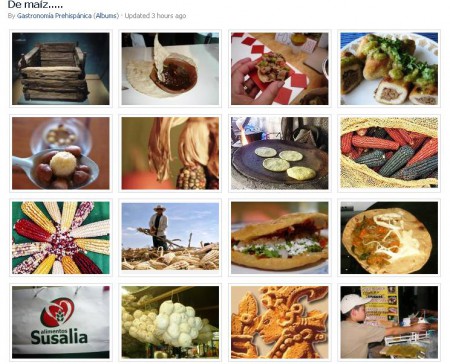Gastronomía Hispanica has a great set of photos on its Facebook page on the “miracle of maize.” 1 Here’s a totally inadequate teaser. Go and friend them.
Nibbles: Goats, Nordic food, Roman beer, Mopani worms, South Sudan
- So apparently there’s a British Goat Society.
- More on that Nordic Food Lab. Note connection to NordGen.
- Beer Chicks do Rome artisanals. So much one could say about this.
- Mopani worms in London. Best place for them.
- South Sudan’s seed system.
Nibbles: Breeding, Frankincense and myrrh, Roman pills, Chinese botanic garden, NPGS, Green red bush tea, Old banyan, Terroir, Botanic gardens and invaders, AnGR
- National Organic Coalition suggests USDA’s National Institute for Food and Agriculture separate conventional and participatory breeding from anything involving DNA in considering projects for support.
- Second-guessing the Three Wise Men.
- Yet more on attempts to deconstruct ancient Roman medicines using DNA from tablets found in a shipwreck. Real Indiana Jones stuff.
- Botanic garden and genebank for drought-resistant plants to be established “in Asia’s largest wild fruit forest.” That would be in China. I really don’t know what to make of this. Really need to find out more. But why am I talking to myself?
- Brown (rice) is beautiful.
- Feedback from a genebank user. Kinda.
- Rooibos gets itself certified.
- The oldest cultivated tree on record.
- The taste of Massachusetts.
- “…strongly conservation-minded botanic gardens appear to be in the minority.” Easy, tiger. Will that new one in China (see above) feature in this minority?
- ILRI on an Aussie TV program on conserving local livestock breeds in Africa.
Nibbles: Cuba, India, Kansas, Amazonia, Rice, Fonio, Rare breed
- A Cuban tells us what he thinks is wrong with Cuban agriculture.
- Rahul Goswami has two long, thoughtful articles, on how India’s next five year plan is not realistic about either food or urbanisation.
- And what’s worse in the US today, drought, or heat? Do we have to choose?
- Less than 1% of Amazonia is made of Terra Preta. Is that enough? I dunno, how about you?
- Wanna buy some rice? I wonder if African rice, heirlooms and endophytes will get a look-in.
- Better bread from minor African grains. Digitaria, that is.
- Dairy Shorthorn in trouble in the UK.
Food Vendor films
IRIN, “a service of the UN Office for the Coordination of Humanitarian Affairs,” has launched a new series of short films.
The Food Vendor tells the story of staple foods in different countries around the world and sheds light on the problems faced by the world’s poor in light of rising food prices.
I watched the first one, on lentils in Nepal, and found it rather tasty, so I thought I would share it here. Alas, unless I’m missing a trick, that does not seem possible. I can download it alright, and share the link on other sites, but I cannot seem to embed the movie here. Too bad, I suppose.
And if you’re into artisanal food processing, just look at the way the woman carefully wet-grinds the lentils at the start of the film.
